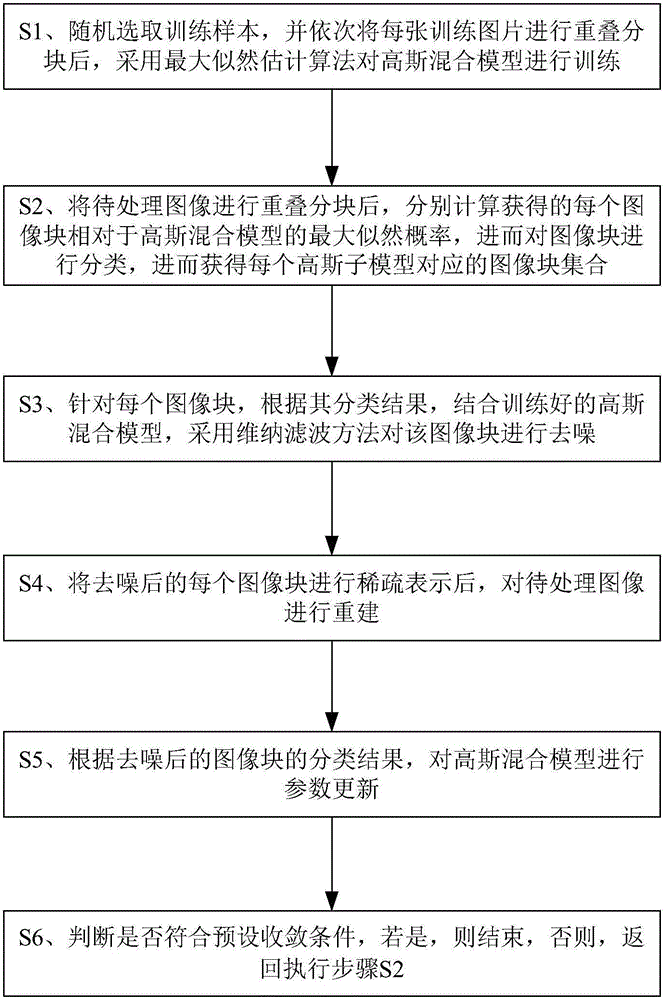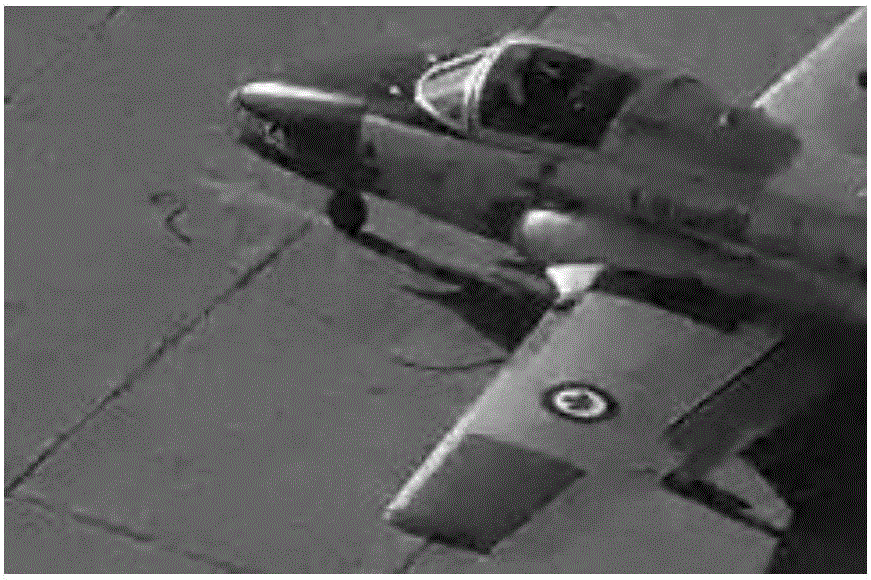Image denoising method based on self-adaptive EPLL algorithm
An adaptive, image-based technology, applied in the field of image processing, can solve problems such as unsatisfactory denoising effect and poor denoising effect
- Summary
- Abstract
- Description
- Claims
- Application Information
AI Technical Summary
Problems solved by technology
Method used
Image
Examples
Embodiment Construction
[0053] refer to figure 1 , the present invention provides a kind of image denoising method based on adaptive EPLL algorithm, comprising:
[0054] S1. Randomly select training samples, and sequentially overlap and divide each training picture, and then use the maximum likelihood estimation algorithm to train the Gaussian mixture model;
[0055]S2. After the image to be processed is overlapped and divided into blocks, calculate the maximum likelihood probability of each obtained image block relative to the Gaussian mixture model, and then classify the image blocks to obtain a set of image blocks corresponding to each Gaussian sub-model;
[0056] S3. For each image block, according to its classification result, combined with the trained Gaussian mixture model, the Wiener filtering method is used to denoise the image block;
[0057] S4. After sparsely representing each image block after denoising, reconstruct the image to be processed;
[0058] S5. Update the parameters of the G...
PUM
 Login to View More
Login to View More Abstract
Description
Claims
Application Information
 Login to View More
Login to View More - R&D
- Intellectual Property
- Life Sciences
- Materials
- Tech Scout
- Unparalleled Data Quality
- Higher Quality Content
- 60% Fewer Hallucinations
Browse by: Latest US Patents, China's latest patents, Technical Efficacy Thesaurus, Application Domain, Technology Topic, Popular Technical Reports.
© 2025 PatSnap. All rights reserved.Legal|Privacy policy|Modern Slavery Act Transparency Statement|Sitemap|About US| Contact US: help@patsnap.com



